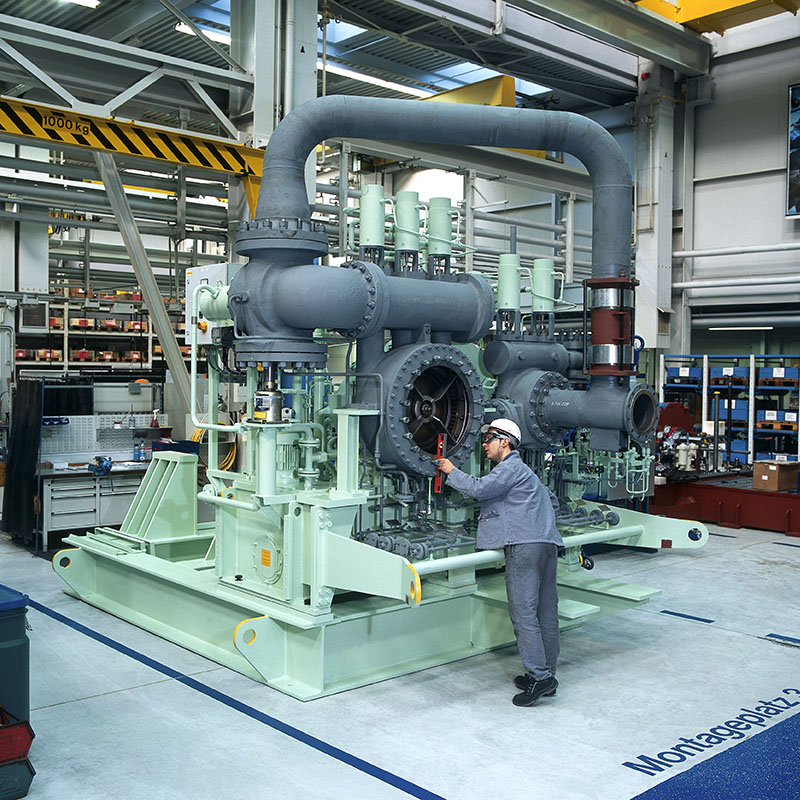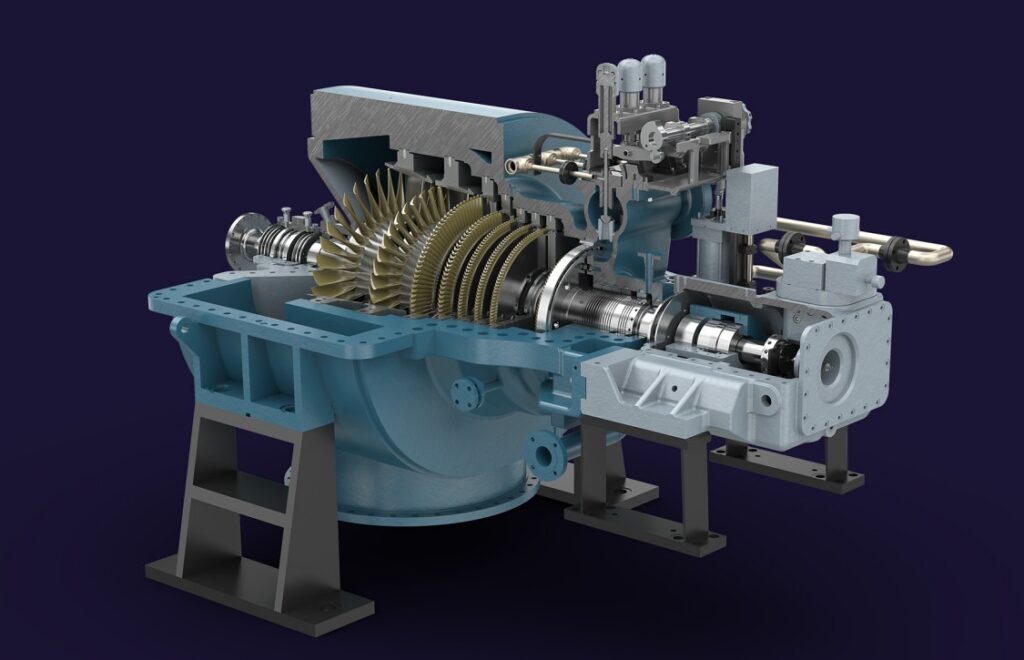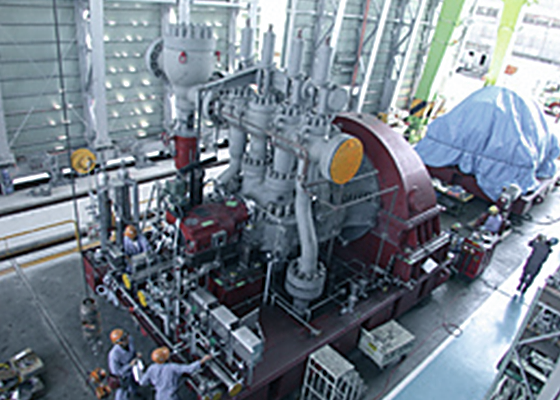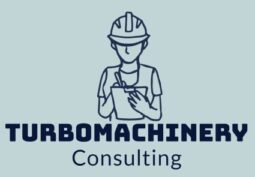FACTORS IMPACTING RELIABILITY - SPECIAL STEAM TURBINES

There are several critical factors that can impact the reliability of special steam turbines in both existing and new plants. These factors can be classified into several categories, including design, operation, maintenance, and environmental conditions. Here are some of the most important factors to consider:
Design: The design of a special steam turbine is critical to its reliability. Poor design can result in inadequate cooling, excessive vibration, or other issues that can lead to failure. To ensure reliability, it is important to use proven designs and materials that have a track record of success.
Operation: Proper operation is essential for the reliability of special steam turbines. This includes following established procedures for startup and shutdown, monitoring performance parameters, and responding to any abnormalities or alarms. In addition, operators should be properly trained and have a good understanding of the equipment they are working with.
Maintenance: Regular maintenance is critical to ensure that special steam turbines continue to operate reliably over the long term. This includes routine inspections, lubrication, and cleaning, as well as more extensive repairs or replacements as needed. It is important to have a well-documented maintenance program in place that includes a schedule of inspections and repairs.
Environmental conditions: The environment in which a special steam turbine operates can also impact its reliability. This includes factors such as temperature, humidity, and air quality. In addition, corrosive or abrasive materials in the steam or condensate can cause damage over time. To mitigate these issues, it may be necessary to use special materials or coatings, or to implement additional monitoring or filtration systems.
To address these factors, it is important to conduct regular studies and assessments of special steam turbine performance and reliability. This can include vibration analysis, thermography, and other diagnostic tools. Based on the results of these studies, actions and recommendations can be developed to improve reliability, such as modifications to the design, changes to operating procedures, or upgrades to maintenance practices or equipment. Ongoing monitoring and analysis can help to ensure that these recommendations are effective and that the turbine continues to operate reliably over the long term.
WHY, WHEN, WHERE, WHAT, WHICH, HOW TO APPLY RELIABILITY FACTORS IN ENGINEERING & DESIGN
Reliability studies and analysis play a crucial role in the engineering and design of special steam turbines to improve maintainability, reliability, availability, and safety in existing plants and new projects for power generation plants, oil, gas, and petrochemical industries. Let’s break down the key aspects of applying reliability studies and analysis:
Why:
- Reliability studies and analysis help identify potential failure modes, their causes, and their impacts on the performance and safety of special steam turbines.
- By understanding the reliability characteristics of different components and subsystems, appropriate design decisions can be made to improve overall system reliability and reduce the likelihood of failures.
- Reliability analysis enables the evaluation of maintenance strategies, optimization of maintenance intervals, and selection of appropriate mitigation measures to enhance the performance and longevity of special steam turbines.
When:
- Reliability studies and analysis should be conducted during the early stages of the engineering and design process to inform decision-making and guide the selection of components, systems, and maintenance strategies.
- They should also be performed periodically throughout the lifecycle of the special steam turbines to assess their performance, identify potential reliability issues, and implement necessary improvements.
Where:
- Reliability studies and analysis should be carried out in engineering offices, research laboratories, and manufacturing facilities that have the necessary expertise and resources to perform detailed assessments of the special steam turbine system.
What:
- Reliability studies involve the systematic assessment of the reliability characteristics of various components, subsystems, and the overall system.
- Reliability analysis includes techniques such as Failure Mode and Effects Analysis (FMEA), Fault Tree Analysis (FTA), Reliability Block Diagrams (RBD), and Reliability-Centered Maintenance (RCM).
- The goal is to identify potential failure modes, their causes, and their impacts, and then develop appropriate mitigation measures and maintenance strategies to enhance reliability.
Which:
- The scope of the reliability studies and analysis should cover all critical components and subsystems of the special steam turbine, including but not limited to bearings, seals, blades, control systems, and auxiliary systems.
- The selection of specific techniques and methodologies should depend on the complexity and criticality of the components and subsystems being analyzed.
How:
- Start by gathering relevant data and information about the special steam turbine system, including design specifications, operational data, and historical maintenance records.
- Conduct detailed reliability analysis using appropriate techniques to identify potential failure modes, their causes, and their impacts on system performance and safety.
- Prioritize the identified failure modes based on their criticality and likelihood of occurrence.
- Develop and implement mitigation measures, such as design improvements, maintenance strategies, redundancy, and backup systems, to reduce the likelihood and impact of failures.
- Continuously monitor and assess the reliability performance of the special steam turbine system, and incorporate lessons learned from maintenance activities and field experience to further improve reliability.

PROCEDURES, ACTIONS, STUDIES, MITIGATION, RECOMMENDATIONS TO APPLY RELIABILITY FACTORS IN ENGINEERING & DESIGN
To apply reliability factors in the design and engineering of special steam turbines and improve maintainability, reliability, availability, and safety in existing plants and new projects for power generation plants, oil, gas, and petrochemical industries, the following procedures, actions, studies, mitigations, and recommendations can be implemented:
Procedures: a. Establish a reliability-centered design approach that focuses on identifying and addressing potential failure modes and their causes. b. Implement a systematic process for reliability analysis, including data collection, analysis, and decision-making. c. Define clear design and engineering standards and guidelines that incorporate reliability considerations.
Actions: a. Conduct a comprehensive failure mode and effects analysis (FMEA) to identify potential failure modes and their impacts on system performance and safety. b. Perform reliability prediction and analysis using techniques such as reliability block diagrams (RBD), fault tree analysis (FTA), and event tree analysis (ETA). c. Implement design improvements based on the findings from reliability analysis, such as enhancing component robustness, incorporating redundancy, or improving maintenance access. d. Develop and implement a proactive maintenance program that includes preventive and predictive maintenance strategies to address potential failure modes.
Studies: a. Perform reliability studies to understand the failure behavior of critical components and subsystems in special steam turbines. b. Analyze historical failure data and operational data to identify trends and patterns that can inform design improvements and maintenance strategies. c. Conduct reliability growth studies to assess the reliability improvement over time and identify areas for further enhancement.
Mitigations: a. Implement condition monitoring and remote diagnostics systems to detect early signs of component degradation and prevent unexpected failures. b. Incorporate robust design features and materials selection to withstand operational stresses and environmental conditions. c. Develop contingency plans and backup systems to minimize downtime in case of failures. d. Implement effective spare parts management and inventory control practices to ensure availability of critical components.
Recommendations: a. Collaborate with suppliers, manufacturers, and industry experts to leverage their expertise and knowledge in improving reliability. b. Conduct regular reliability audits and assessments to identify areas for improvement and ensure compliance with reliability standards. c. Continuously monitor and analyze field performance data to identify reliability issues and implement necessary corrective actions. d. Promote a culture of reliability awareness and knowledge sharing among design, engineering, and maintenance teams.

